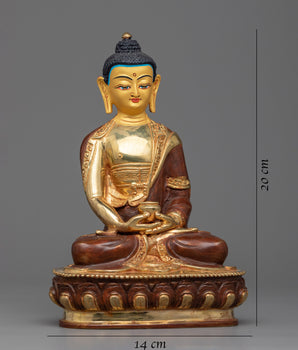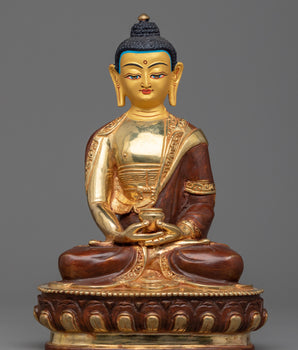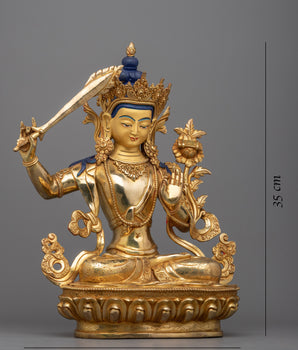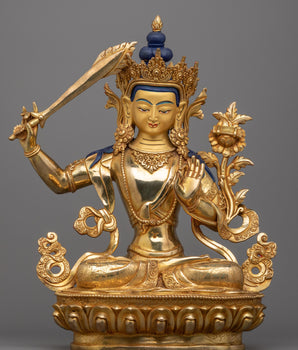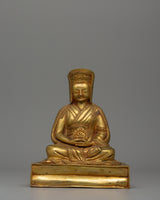
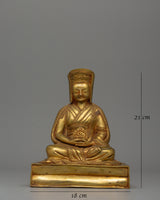
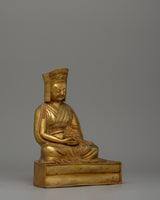
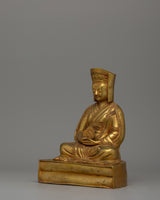
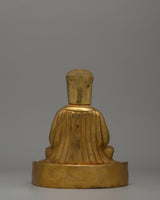
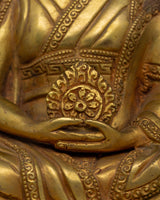
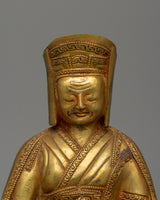
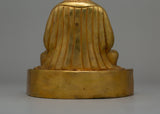
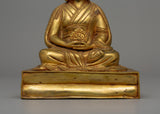
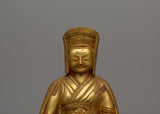
Buddhist Master Gampopa Statue | Tibetan Buddhism Dharma Decor

100% AUTHENTIC

HANDMADE

FREE SHIPPING
Kagyu Tradition Gampopa Figurine for Dharma Present
-----------------------------------------------------------------------
Size: 24 cm (Height) x 18cm(Width)
Weight: 1.57 kg
Materials: Copper Body, Gold Plated
-----------------------------------------------------------------------
About Our Statue
The Gampopa Statue is made of copper and finished with gold plating, giving it a rich, luminous appearance. Standing 21 cm tall and 18 cm wide, this stunning statue depicts the revered Buddhist master in a serene seated position. Gampopa is depicted with serene yet focused features, indicating his dual role as a scholar and spiritual teacher. His posture is calm and contemplative, with one hand gently holding a symbolic object and the other resting in a gesture of instruction and wisdom. This thoughtful positioning is typical of Buddhist art, emphasizing peace, enlightenment, and knowledge transmission.
The gold plating adds a touch of divine elegance to the statue, reflecting light in a rich golden hue and increasing its aesthetic appeal. The intricate detailing on the robes and facial features demonstrate the masterful craftsmanship behind this piece. The folds and layers of Gampopa's robe are meticulously carved, with special attention paid to texture and flow, ensuring that the statue exudes dignity and elegance. His calm facial expression and intricate adornments add to the significance of this figure, which represents the wisdom and spirituality that Gampopa shared with the world.
With a weight of 1.57 kg, this statue exudes stability and timeless beauty, making it an ideal addition to a home altar, a collection of Buddhist art, or any space dedicated to meditation and reflection. The Gampopa Statue is more than just a visual masterpiece; it also serves as a reminder of the revered Buddhist figure's profound teachings and compassion. The careful design and plating make it a valuable item representing artistic beauty and spiritual enlightenment.
Introduction to Buddhist Master
Gampopa received teachings from masters from many lineages, including Nyingma and Kadampa. He became the foremost disciple of the renowned yogi Milarepa at 30, receiving instruction in Vajravarahi, the tummo, and Mahamudra from him—the master's clothing with traditional Tibetan adornment. Ashtamangala is used to carve the throne (Eight auspicious symbols).
How to set up your own Buddhist Shrine?
• Find a clean, quiet, and uncluttered spot
• Set up an altar table and cover it with an altar cloth that calls to you
• Place your sacred item at the center















